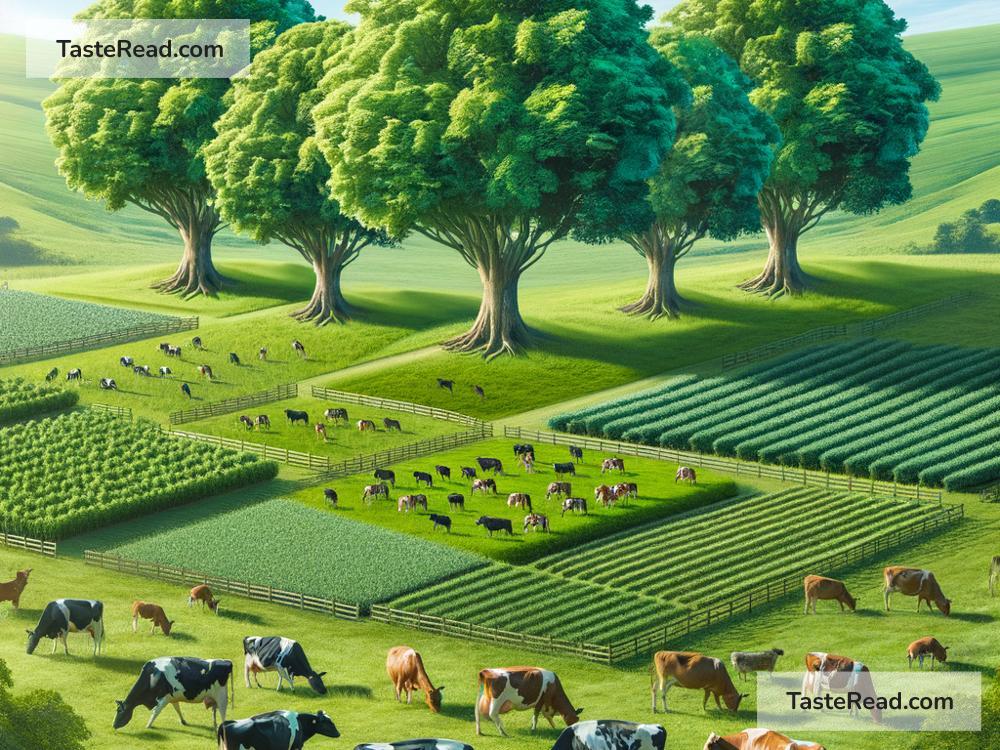Exploring the Role of Silvopasture in Meat Production: A Step Towards Sustainable Farming
In recent years, there’s been a growing conversation about how we produce our food. Specifically, there’s a spotlight on meat production, which is often criticized for being harmful to the environment. That’s where silvopasture comes into the picture, offering a promising solution to some of these concerns. In simple terms, silvopasture is a method that combines trees, pasture, and livestock all in one area. It’s an age-old practice, but it’s gaining renewed attention as we search for more sustainable farming methods. Let’s dive into how silvopasture works and why it could be a game-changer in meat production.
What is Silvopasture?
Imagine a farm where trees and livestock coexist in harmony. That’s essentially what silvopasture is. It integrates trees, pasture, and animals in a way that benefits the environment and can potentially lead to better meat production. Rather than clearing vast areas of trees for pasture, silvopasture encourages the growth of certain types of trees alongside or within grazing lands. This integration fosters a diverse ecosystem where each component supports the others.
Environmental Benefits
Silvopasture’s environmental benefits are remarkable. Trees play a crucial role in capturing carbon dioxide from the atmosphere, helping to mitigate climate change. They also provide shade for animals, reducing stress and potentially leading to better growth and meat quality. Moreover, the presence of trees reduces soil erosion and improves water retention in the soil, leading to healthier land that can be farmed more sustainably over time.
Boosting Animal Welfare and Product Quality
Happy animals often mean healthier animals, and healthier animals lead to better quality meat. The natural environment of silvopasture systems allows animals to exhibit more of their natural behaviors, which contributes to their well-being. For example, cows can choose to graze in the sun or cool off under the shade of trees, depending on their needs. This less stressful environment can lead to better meat production, both in terms of quantity and quality.
Economic Benefits for Farmers
Silvopasture can also make good economic sense for farmers. By diversifying their farm’s operations, farmers can potentially earn income not just from livestock but also from timber, fruit, or nuts from the trees they grow. This diversification can help protect against market fluctuations and provide additional income streams. Moreover, healthier animals and better soil mean potentially lower costs for feed, healthcare, and maintenance in the long run.
Challenges and Considerations
While silvopasture has many benefits, it’s not without its challenges. Transitioning to a silvopasture system can require a significant upfront investment in time and resources. Farmers need to select the right types of trees that will benefit their specific livestock and pasture environment, which requires careful planning and knowledge. Additionally, managing a silvopasture system can be more complex than traditional farming, as it requires understanding and balancing the needs of trees, animals, and pasture.
Despite these challenges, the potential benefits of silvopasture for sustainable meat production are increasingly recognized by researchers, farmers, and environmentalists alike. With the right support and resources, farmers can overcome these barriers and successfully implement silvopasture practices on their lands.
Looking Towards a Sustainable Future
As the world grapples with environmental issues and the need for sustainable food production systems, silvopasture offers a glimmer of hope. It represents a holistic way of farming that respects nature, supports animal welfare, and provides economic benefits for farmers. While it’s not a one-size-fits-all solution, incorporating silvopasture into more farms could play a significant role in making meat production more sustainable.
Final Thoughts
Meat production is often viewed through a lens of environmental degradation and concern for animal welfare. However, silvopasture offers a different narrative—one where meat can be produced in harmony with nature, benefitting the environment, animals, and farmers alike. By exploring and embracing practices like silvopasture, we can move towards a more sustainable and resilient food system.
The journey towards more sustainable meat production is complex and challenging, but it’s also filled with opportunities for innovation and improvement. Silvopasture is one such opportunity, promising a blend of traditional wisdom and modern sustainability practices. As we continue to seek ways to produce food in harmony with the planet, silvopasture stands out as a beacon of holistic farming and an integral part of the solution.


